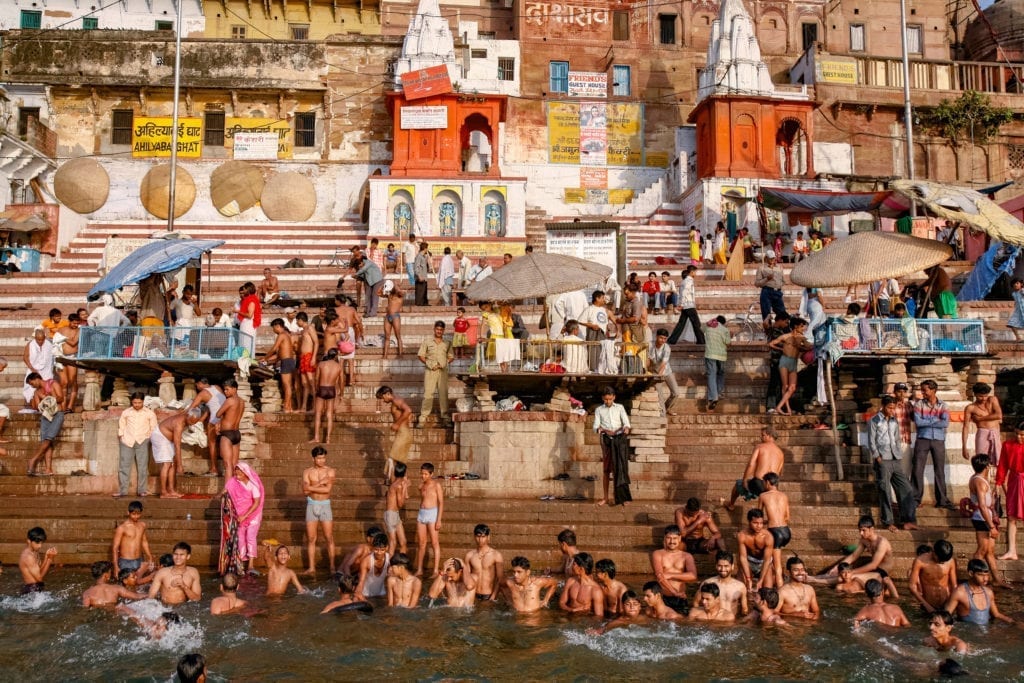David Levene has spent many years photographing for The Guardian, and in particular for their EyeWitness series, which he cites as some of his best work. Beyond The Guardian, Levene has undertaken a great number of projects for charities, photographing the unique challenges, but also the similarities, of people around the world. His interest in that which connects us makes Levene the perfect ambassador for Portrait of Humanity, a project seeking to prove that there is more that unites us than sets us apart.
David Levene’s book City combines over 14 years of work shot across 62 different cities, from the suburban banality of Walthamstow, London, to the congested streets of Tokyo’s Shibuya crossing, and the homeless camps of San Francisco. The book provides a startling glimpse into the diverse forms of urbanity that exist around the world. With more than half of the world’s population now living in cities, Levene’s photographs tell a powerful story of people, place, and modern life. City is set to be re-released soon as a revised edition, with a Kickstarter campaign launching in the Spring.
We spoke to Levene about Portrait of Humanity, and the appeal of photographing urban environments.

City begins with an aerial view of your home in Walthamstow, London. Why did you choose to open with that photograph?
The opening photograph of Walthamstow was interestingly one of the last ones I shot. I realised that the book lacked images of the more mundane side to urban living; there were all these big, exciting pictures of places around the world showing interesting stories and people, but there was none of that urban or suburban dreariness, which most people feel in London or other cities. I went out and tried to get some of those shots, and it just made perfect sense to have my home, Walthamstow, in there.
Where did the idea for City come from?
It was a lot to do with my publisher, who saw an earlier exhibition I did, which concentrated on my EyeWitness work for The Guardian. Taken as a collection, it became apparent that the majority of the photographs I took for EyeWitness were shot in an urban context. Whilst I’d done all sorts of work; reportage, portrait and architecture, the thread of photographs of urban environments became something I wanted to explore more.

And what is it about urban life that interests you as a photographer?
I always talk predominantly about my work for The Guardian, but my work is actually very varied, and I also shoot on behalf of various charities. Often, my photographs come back to quite tough social issues, especially in terms of my charity-based projects. I find myself in challenging places and dealing with tough stories, and having to look at some of the more difficult aspects of living in urban environments.
There are certain things that I’m constantly learning by seeing these different cities, cultures and people. One of the most interesting things is how similar we all are. There are so many similarities all over the world in terms of what people deal with on a day to day basis. Going to many of these different urban environments, you find a sense of humanity that runs through everybody, which doesn’t change regardless of where it is or who you are. From a human perspective, the most interesting and humbling thing is that you see people in really difficult situations, and you still see elements of humanity there.
The other thing that interests me is the way cities work on a bigger scale. I’m really interested in the way cities are built, and how they become these living, breathing entities.

How do you think photography is uniquely placed to help us understand how other cultures and groups of people live?
I can’t think of a better medium in which to communicate with each other, and it is precisely that which made me want to get into photography to begin with. It is also why I am so pleased to be a part of Portrait of Humanity. There are other competitions that are very global, but Portrait of Humanity feels more like a project than a competition. I’m very interested in the idea of photographing what is normal to you, and how that might be extraordinary to someone else.
I also think that what is interesting right now is how the world has opened up in a photographic sense. We are all taking pictures on our phones, and are actually taking more pictures than we have done in history. For professional photographers, it’s a really exciting time in the industry because there are also technological advancements which mean photographers can have their work seen by a global audience, which is something I’ve seen first hand at The Guardian.
What do you think makes for a compelling portrait?
I love all sorts of portraiture, but I am particularly keen on environmental portraiture, or portraits that can tell a story in a single image. I’m always trying to compress something into a single image. I think if you’re able to communicate something about somebody or somebody’s life, an experience or an event, in a single picture, then those are the sorts of portraits that are the most successful.
Do you want to be part of the movement? Together, we will create a Portrait of Humanity
Nairobi, Kenya © David Levene




